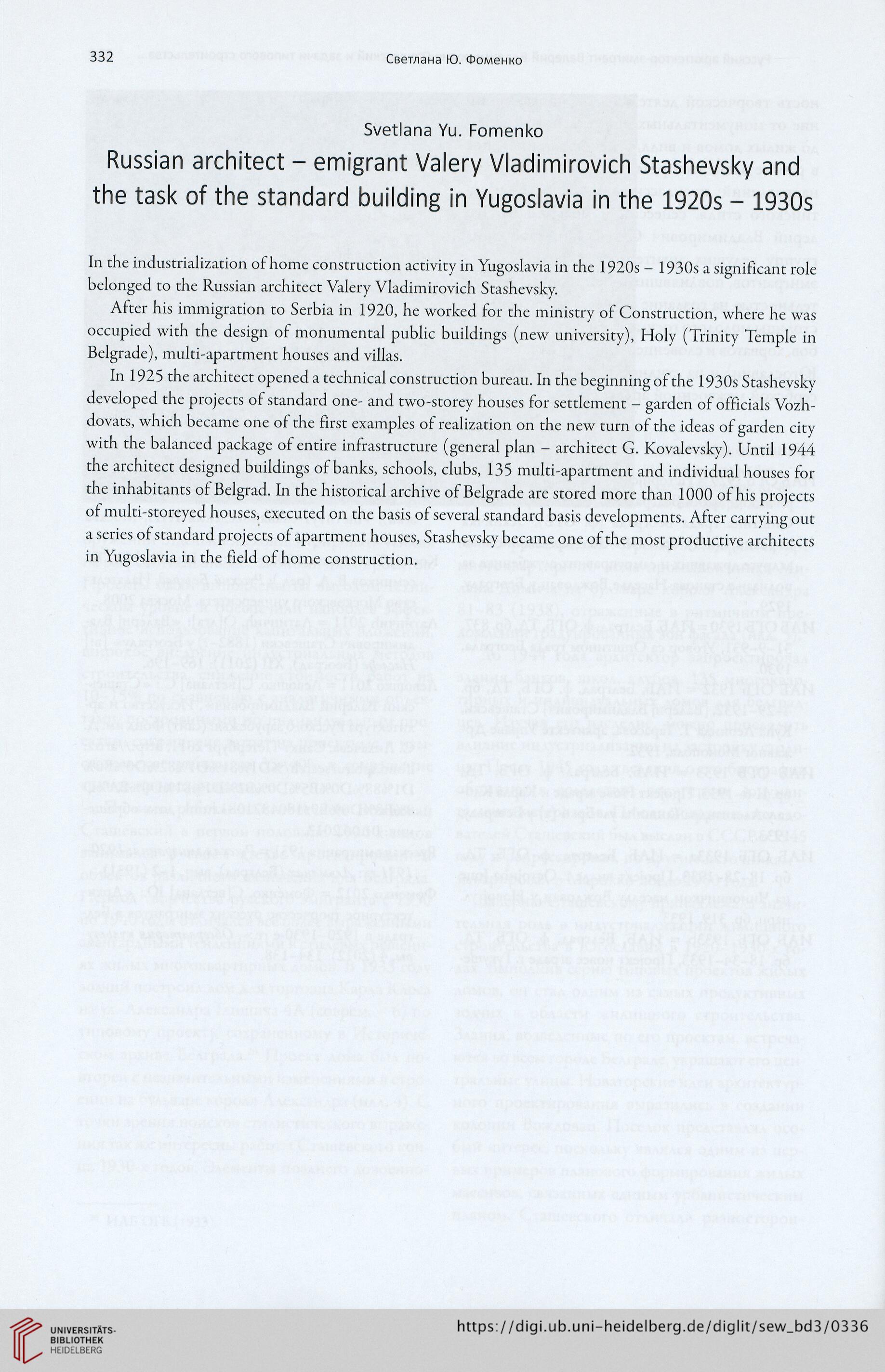332
Светлана Ю. Фоменко
Svetlana Yu. Fomenko
Russian architect - emigrant Valery Vladimirovich Stashevsky and
the task of the standard building in Yugoslavia in the 1920s - 1930s
In the industrialization of home construction activity in Yugoslavia in the 1920s - 1930s a significant role
belonged to the Russian architect Valery Vladimirovich Stashevsky.
After his immigration to Serbia in 1920, he worked for the ministry of Construction, where he was
occupied with the design of monumental public buildings (new university), Holy (Trinity Tempie in
Belgrade), multi-apartment houses and villas.
In 1925 the architect opened a technical construction bureau. In the beginning of the 1930s Stashevsky
developed the projects of standard one- and two-storey houses for settlement - garden of officials Vozh-
dovats, which became one of the first examples of realization on the new turn of the ideas of garden city
with the balanced package of entire infrastructure (generał plan - architect G. Kovalevsky). Until 1944
the architect designed buildings of banks, schools, clubs, 135 multi-apartment and individual houses for
the inhabitants of Belgrad. In the historical archive of Belgrade are stored morę than 1000 of his projects
of multi-storeyed houses, executed on the basis of several standard basis developments. After carrying out
a series of standard projects of apartment houses, Stashevsky became one of the most productive architects
in Yugoslavia in the field of home construction.
Светлана Ю. Фоменко
Svetlana Yu. Fomenko
Russian architect - emigrant Valery Vladimirovich Stashevsky and
the task of the standard building in Yugoslavia in the 1920s - 1930s
In the industrialization of home construction activity in Yugoslavia in the 1920s - 1930s a significant role
belonged to the Russian architect Valery Vladimirovich Stashevsky.
After his immigration to Serbia in 1920, he worked for the ministry of Construction, where he was
occupied with the design of monumental public buildings (new university), Holy (Trinity Tempie in
Belgrade), multi-apartment houses and villas.
In 1925 the architect opened a technical construction bureau. In the beginning of the 1930s Stashevsky
developed the projects of standard one- and two-storey houses for settlement - garden of officials Vozh-
dovats, which became one of the first examples of realization on the new turn of the ideas of garden city
with the balanced package of entire infrastructure (generał plan - architect G. Kovalevsky). Until 1944
the architect designed buildings of banks, schools, clubs, 135 multi-apartment and individual houses for
the inhabitants of Belgrad. In the historical archive of Belgrade are stored morę than 1000 of his projects
of multi-storeyed houses, executed on the basis of several standard basis developments. After carrying out
a series of standard projects of apartment houses, Stashevsky became one of the most productive architects
in Yugoslavia in the field of home construction.




